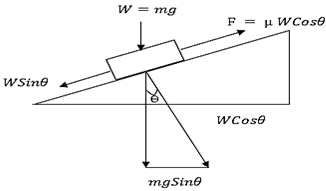GREY RELATIONAL ANALYSIS (GRA) OF TRIBOLOGICAL AND THERMAL PROPERTIES OF COW HOOF – REINFORCED BRAKE PADS
Keywords:
Brake pad, Coefficient of friction, Cow hoof, Moulding pressure, Thermo-gravimetric analysis, Wear rateAbstract
This study investigates and optimizes the tribological and thermal performance of cow hoof (CH)–reinforced brake pads using Grey Relational Analysis (GRA). The brake pad was produced using CH as the reinforcement material alongside with other additives which are binder (epoxy and hardener), graphite, calcium carbonate and aluminum oxide. These additives were in the proportion of 25 %, 25 %, 10 %, 30 % and 10 % by weight respectively. The produced brake pads were subjected to wear rate and coefficient of friction (COF) tests. GRA was used to obtain values of the moulding parameters that yielded optimum performance. The values of the wear rate and COF of the optimized sample are 0.197 mg/m and 0.781 respectively. Further characterisation revealed a thermal conductivity of 0.0248 W/mK. Thermo-gravimetric analysis (TGA) reveals that while asbestos-based brake pad has a better thermal stability than the CH - reinforced brake pad, the CH -reinforced brake pad has its maximum decomposition at elevated temperature range of 300 ⁰C – 400 ⁰C, which falls within the average brake temperature range. The experimental results of the produced brake pad compared well with the commercial and other existing experimental brake pads, demonstrating CH as a novel agro-waste material for sustainable, asbestos-free brake pad production.

Published
How to Cite
Issue
Section
Copyright (c) 2025 Victor Ndaraba Haruna, Sulaiman Ibrahim

This work is licensed under a Creative Commons Attribution 4.0 International License.




